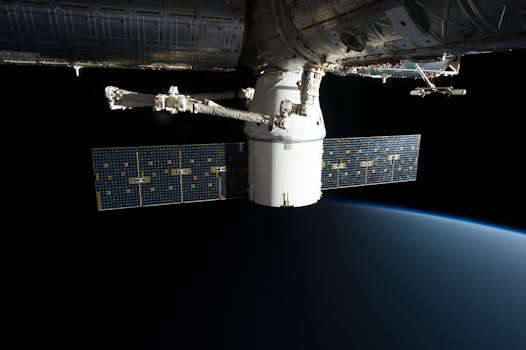The New Frontier: Exploring the Latest Trends in Satellite Communication

The New Frontier: Exploring the Latest Trends in Satellite Communication
Satellite communication is the new frontier in the world of telecommunications. The latest trends in satellite communication are revolutionizing the way we connect and communicate. With advancements in space technology, satellite communication is becoming more efficient, reliable, and accessible. At the forefront of this revolution is the Focus Keyword: Satellite Communication, which is enabling new possibilities for communication, navigation, and remote sensing.
The use of satellites in communication has been around for several decades, but recent advancements have made it more viable and cost-effective. The launch of new satellite constellations, such as OneWeb and Starlink, has increased the availability of satellite communication services, making it more accessible to individuals and organizations worldwide. These constellations are designed to provide high-speed, low-latency internet connectivity, enabling a wide range of applications, including broadband internet, voice and video communication, and IoT connectivity.
Advancements in Space Technology
Advances in space technology have been instrumental in driving the growth of satellite communication. The development of new launch vehicles, such as reusable rockets, has reduced the cost of launching satellites into orbit. Additionally, advancements in materials science and manufacturing have enabled the production of smaller, more efficient satellites, which are cheaper to launch and operate. These advancements have made it possible to deploy large constellations of satellites, which can provide global coverage and enable a wide range of applications.
The use of advanced technologies, such as phased arrays and beam-hopping, has also improved the efficiency and capacity of satellite communication systems. Phased arrays enable satellites to transmit and receive signals in multiple directions simultaneously, increasing the capacity of the system. Beam-hopping technology allows satellites to dynamically allocate bandwidth to different regions, improving the efficiency of the system and reducing interference.
Applications of Satellite Communication
Satellite communication has a wide range of applications, including broadband internet, voice and video communication, IoT connectivity, and navigation. Satellite-based broadband internet services are being used to connect remote and underserved communities, providing access to information and opportunities for economic development. Satellite-based voice and video communication services are being used for emergency response, disaster relief, and remote healthcare.
The use of satellite communication in IoT connectivity is also growing, as it provides a cost-effective and reliable way to connect devices in remote or hard-to-reach areas. Satellite-based navigation systems, such as GPS, are being used for a wide range of applications, including aviation, maritime, and land transportation. The use of satellite communication in remote sensing is also becoming more prevalent, as it provides a way to monitor the environment, track climate change, and predict weather patterns.
Challenges and Opportunities
Despite the many advancements in satellite communication, there are still several challenges that need to be addressed. One of the major challenges is the issue of space debris, which poses a significant risk to satellites and other space-based assets. The growth of satellite constellations has also raised concerns about interference, as the increased number of satellites in orbit can cause interference with other satellite systems.
However, these challenges also present opportunities for innovation and growth. The development of new technologies, such as satellite-based solar power and space-based manufacturing, could provide new opportunities for satellite communication. The use of satellite communication in emerging markets, such as Africa and Latin America, could also provide new opportunities for economic development and growth.




